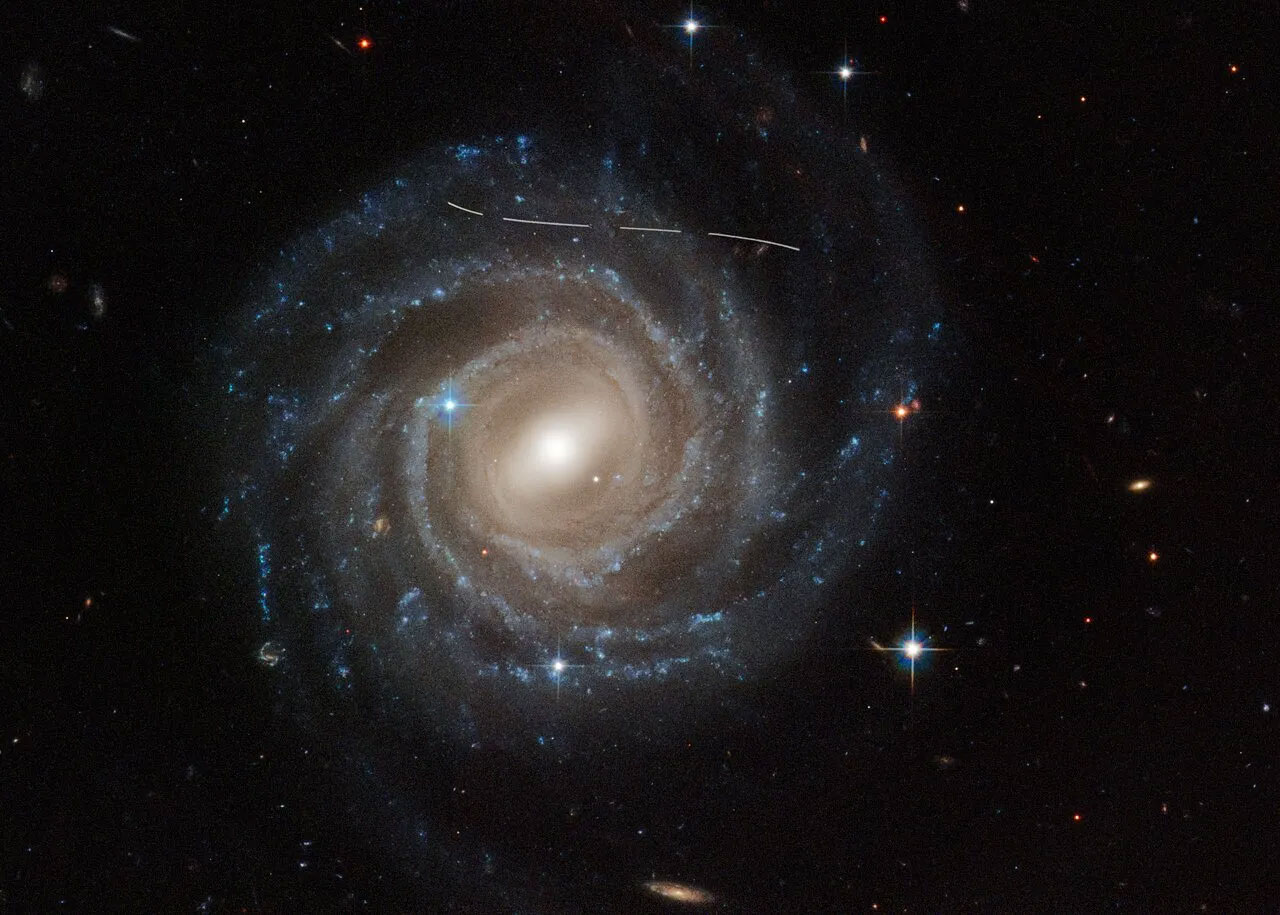More than 1,000 new asteroids discovered thanks to 'photobomb' phenomenon
The Hubble Space Telescope is famous for its clear, eye-catching images of distant galaxies, but it has also been useful in helping to study objects within our own Solar System. Recently, researchers have gotten creative and found a way to use Hubble data to discover previously unknown asteroids, many of which are located in the main asteroid belt between Mars and Jupiter.
The team discovered a staggering 1,031 new asteroids. Many of them are small and extremely difficult to spot—hundreds of them are less than 1 kilometer in diameter, for example. To identify these asteroids, the researchers combed through 37,000 Hubble images taken over a 19-year period, looking for and carefully analyzing the characteristic streaks of light that come from asteroids passing by Hubble's lens.

To help process this massive amount of data, professional astronomers enlisted the help of a community of citizen scientists called the Hubble Asteroid Hunter. Together, they combed through the Hubble image archives to look for signs of asteroids. The team also used machine learning algorithms to detect signs of 'photobombs'—when an asteroid flies by and leaves a bright trail in a Hubble image. The team found a surprisingly large number of objects.
'We are now looking more closely at small asteroids in the main belt,' said Dr Pablo García Martín from the Autonomous University of Madrid, Spain, lead author of the study. 'It was surprising to see such a large number of potential objects. There had been some hints about the existence of this population before, but now we are confirming it with a random sample from the Hubble image archive. This is important to provide insights into models of the evolution of the Solar System.'
By analyzing the shapes of the light trails in the images, especially those that appear over multiple exposures, astronomers can calculate the orbits and distances of asteroids. Then, by comparing the brightness of each object to its distance, their sizes can be estimated with relative accuracy.
'The location of asteroids changes over time, so you can't find them just by entering their coordinates, because at different times they may no longer be there,' explains study co-author Dr Bruno Merín, from the European Space Astronomy Centre in Madrid, Spain . 'As astronomers, we don't have enough time to look at all the asteroid images. So we came up with the idea of collaborating with more than 10,000 amateur volunteers to search through the huge Hubble archive, ' he says.
Thanks to the combination of modern technology and the power of community, this research not only expands our understanding of the asteroid belt but also shows the great potential of open scientific collaboration in the era of big data.
You should read it
- The Hubble Telescope sent back to Earth its first photo after changing its operating method
- The Hubble Telescope discovered a pair of small dwarf galaxies containing many interesting features
- The Hubble Telescope finds a galaxy glowing strangely from behind a dark nebula
- Lonely star glitters in the background of an amorphous galaxy in the eyes of the Hubble telescope
- The Tarantula Nebula appears beautifully through the eyes of the Hubble telescope
- The day you were born, is there anything special about space? NASA will help you observe with Hubble
- Hubble Telescope extremely rare photo of the moment of the Supernova explosion
- Admire the latest Hubble masterpiece
May be interested
- Warning signs you may be lactose intolerant
 lactose intolerance occurs in people who lack the enzyme needed to break down lactose, the sugar in milk. here are common signs of lactose intolerance.
lactose intolerance occurs in people who lack the enzyme needed to break down lactose, the sugar in milk. here are common signs of lactose intolerance. - Interesting facts about dinosaurs you may not know
 dinosaurs have become some of the strangest animals to ever exist on this planet. here are some of the most amazing facts about dinosaurs you can imagine.
dinosaurs have become some of the strangest animals to ever exist on this planet. here are some of the most amazing facts about dinosaurs you can imagine. - Interesting facts about bread you may not know
 bread is not only one of many people's favorite foods, it has also been a part of human culture and symbolism since long before recorded history.
bread is not only one of many people's favorite foods, it has also been a part of human culture and symbolism since long before recorded history. - Side Effects of Too Much Caffeine
 although caffeine is generally safe in low to moderate amounts, consuming large amounts can lead to unpleasant and even dangerous side effects.
although caffeine is generally safe in low to moderate amounts, consuming large amounts can lead to unpleasant and even dangerous side effects. - Why Mosquitoes Are Always Buzzing Around Our Ears and Simple Ways to Fix It
 how to stop mosquitoes from buzzing around your ears is simpler than many people think. if you find mosquitoes buzzing around your ears, read the article below to find out why.
how to stop mosquitoes from buzzing around your ears is simpler than many people think. if you find mosquitoes buzzing around your ears, read the article below to find out why. - Fascinating facts about the Earth's mantle
 the earth's mantle is the thick layer of hot, solid rock that lies between the earth's crust and the molten iron core. it makes up the bulk of the earth, accounting for two-thirds of the planet's mass.
the earth's mantle is the thick layer of hot, solid rock that lies between the earth's crust and the molten iron core. it makes up the bulk of the earth, accounting for two-thirds of the planet's mass.






 NASA will shoot asteroids close to Earth
NASA will shoot asteroids close to Earth Interesting discoveries about asteroids in the solar system
Interesting discoveries about asteroids in the solar system NASA has just discovered an asteroid with an extremely 'weird' shape
NASA has just discovered an asteroid with an extremely 'weird' shape SpaceX missiles with a speed of 70km / s can catch up with interstellar asteroids
SpaceX missiles with a speed of 70km / s can catch up with interstellar asteroids Crystal whirlpools on the top of the Andes, an unprecedented phenomenon in history
Crystal whirlpools on the top of the Andes, an unprecedented phenomenon in history